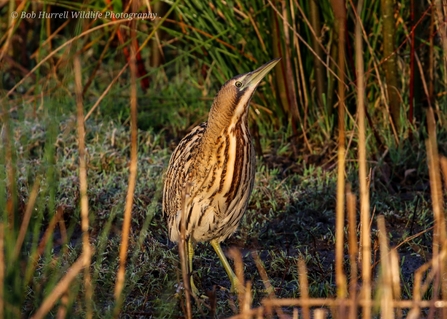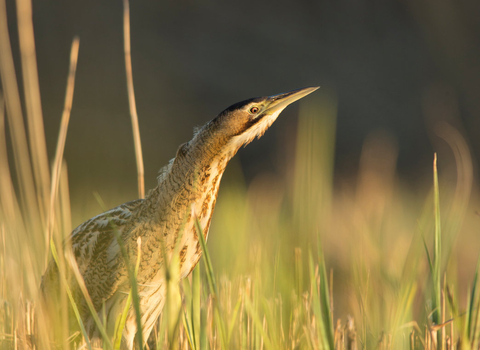This is the first time that bitterns have bred at our Lunt Meadows Flood Storage Reservoir and Nature Reserve in Lunt village in Sefton, and the first time in the local area in approximately 200 years.
Bitterns are a type of heron, with golden brown feathers that are striped with darker browns. Once common in wetlands, bittern numbers plummeted over the centuries, mostly due to the huge loss of the reedbed habitat which they depend on for survival. In 1997, there were only 11 breeding males recorded in the UK, confined to the reedbeds of north Lancashire and Norfolk.
Since then, thanks to targeted conservation efforts to create extensive areas of wetland such as Lunt Meadows, there are an estimated 200 breeding bittern pairs in the UK today.


